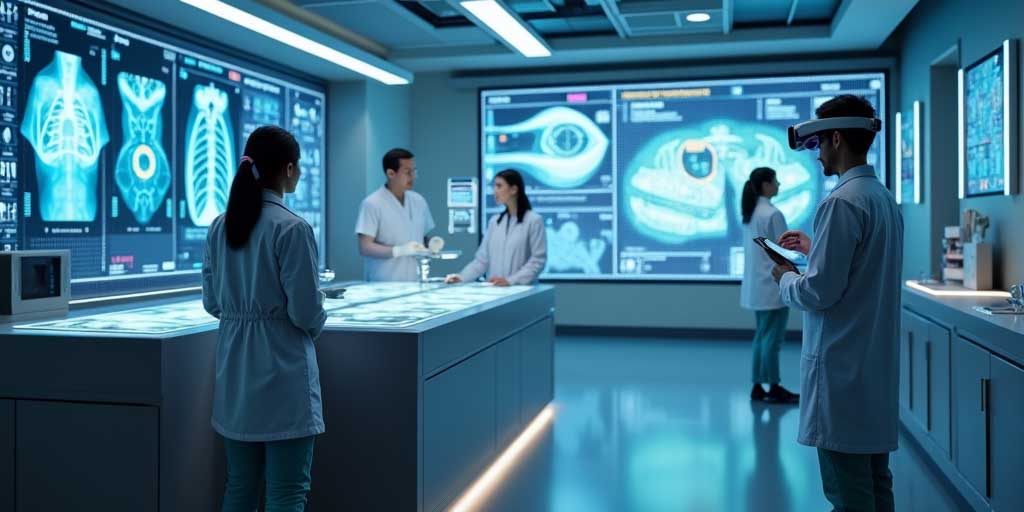Revolutionizing Patient Care: The Top Healthcare Trends to Watch in 2025
The healthcare industry is on the brink of a revolution, with groundbreaking innovations and technologies gearing up to transform patient care in 2025 and beyond. As we inch closer to this pivotal year, several key trends are emerging that promise to reshape the healthcare landscape, making services more efficient, accessible, and personalized. Here’s a deep dive into the top healthcare trends to watch in 2025, each poised to enhance patient outcomes and redefine health management practices.
1. Artificial Intelligence (AI) and Machine Learning (ML)
AI and ML continue to stand at the forefront of healthcare innovation, with their applications becoming increasingly sophisticated. By 2025, these technologies will not only automate administrative tasks but also aid in complex clinical decision-making. AI algorithms are expected to improve diagnostic accuracy, predict patient outcomes, and personalize treatment plans by analyzing vast datasets that human clinicians cannot process as quickly.
Example:
A notable instance is the use of AI in radiology. AI-powered tools can analyze imaging results faster and with greater accuracy than human radiologists. For instance, AI software developed by companies like DeepMind can detect over 50 types of eye diseases as accurately as world-leading expert doctors.
2. Telemedicine and Remote Monitoring
The COVID-19 pandemic accelerated the adoption of telemedicine, and by 2025, its scope will expand significantly. Telemedicine will move beyond simple virtual consultations to include remote patient monitoring and mobile health services. This trend will be particularly transformative in rural areas and for patients with chronic conditions, making healthcare more accessible to those unable to visit medical facilities regularly.
Example:
Companies like Teladoc Health are expanding their services to offer not only virtual visits but also chronic care management, incorporating IoT devices that patients use at home to monitor their health and transmit data directly to healthcare providers.
3. Personalized and Precision Medicine
Tailoring medical treatments based on individual genetic profiles, lifestyles, and environmental factors will become the norm by 2025. Advances in genomics and biotechnology will allow for more effective and precise interventions, particularly in fields like oncology, where precision medicine can guide the selection of the most effective cancer therapies based on a patient’s genetic makeup.
Example:
The use of CRISPR gene-editing technology is a prime example of precision medicine’s potential. This technology can potentially correct genetic defects at precise locations in the human genome, offering hope for the cure of genetic diseases like cystic fibrosis or sickle cell anemia.
4. Internet of Medical Things (IoMT)
The proliferation of connected healthcare devices and IoT will enhance the ability to monitor, collect, and analyze health data in real-time. By 2025, the IoMT will not only include wearables that monitor vital signs but also smart implants and sensors that can predict and prevent acute medical events.
Example:
Smart inhalers for asthma patients are a great example of IoMT. These devices can track usage and gather data on air quality, providing feedback and alerts to both patients and their doctors, which helps in managing the condition more effectively.
5. Blockchain for Health Data Security
As digital health data proliferates, maintaining privacy and security becomes increasingly critical. Blockchain technology offers a promising solution by creating decentralized and immutable ledgers of health records. By 2025, blockchain is expected to be widely adopted for secure patient data management, ensuring confidentiality and integrity in health data exchange.
Example:
Blockchain platforms like Patientory are revolutionizing the way healthcare data is stored, accessed, and shared, allowing patients to own and control their health data securely.
6. Augmented Reality (AR) and Virtual Reality (VR)
AR and VR technologies are set to transform the training and education of healthcare professionals by providing immersive learning experiences that mimic real-life scenarios. By 2025, these tools will also be used extensively for patient education and in therapeutic settings, offering new ways to manage conditions such as PTSD or anxiety.
Example:
VR applications like those developed by Oxford VR are being used to deliver cognitive behavioral therapies in a virtual environment, helping patients overcome anxiety disorders without the constant need for a therapist’s presence.
7. Robotic Surgery and Automation
Robotic surgery has been making waves for several years, and by 2025, it will become even more advanced. Surgeons will use robots with enhanced precision and flexibility, leading to less invasive procedures, reduced recovery times, and better outcomes. Automation will also extend to other areas of healthcare, including robotic dispensing systems in pharmacies and automated laboratory processes.
Example:
The da Vinci Surgical System is a pioneer in this field, allowing surgeons to perform complex surgeries with enhanced vision, precision, and control.
Conclusion
By 2025, these innovative trends promise to enhance the efficiency of healthcare providers and personalize patient care to unprecedented levels. As these technologies evolve, they will play crucial roles in addressing the challenges posed by an aging population and the increasing burden of chronic diseases, ultimately leading to healthier societies worldwide. The future of healthcare is not just about treating diseases—it’s about using cutting-edge technology to prevent them, predict them, and cure them in ways that were unimaginable just a few years ago.
